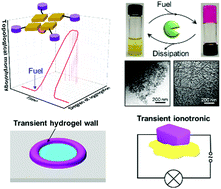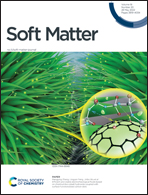Feedback-controlled topological reconfiguration of molecular assemblies for programming supramolecular structures†
Abstract
In biology, nonequilibrium assembly is characterized by fuel-driven switching between associating and nonassociating states of biomolecules. This dynamic assembly model has been used routinely to describe the nonequilibrium processes in synthetic systems. Here, we present a G-quartet-based nonequilibrium system based on fuel-driven co-assembly of guanosine 5′-monophosphate disodium salt hydrate and urease. Addition of lanthanum(III) ions to the system caused macroscopic dynamic switching between precipitates and hydrogels. Interestingly, combined analyses of the nonequilibrium systems demonstrated that molecules could switch between two distinct associating states without undergoing a nonassociating state. This finding suggested a nonequilibrium assembly mechanism of topological reconfiguration of molecular assemblies. We detailed quantitatively the nonequilibrium assembly mechanism to precisely control the phase behaviors of the active materials; thus, we were able to use the materials for transient-gel-templated polymerization and transient circuit connection. This work presents a new nonequilibrium system with unusual phase behaviors, and the resultant active hydrogels hold promise in applications such as fluid confinements and transient electronics.



 Please wait while we load your content...
Please wait while we load your content...